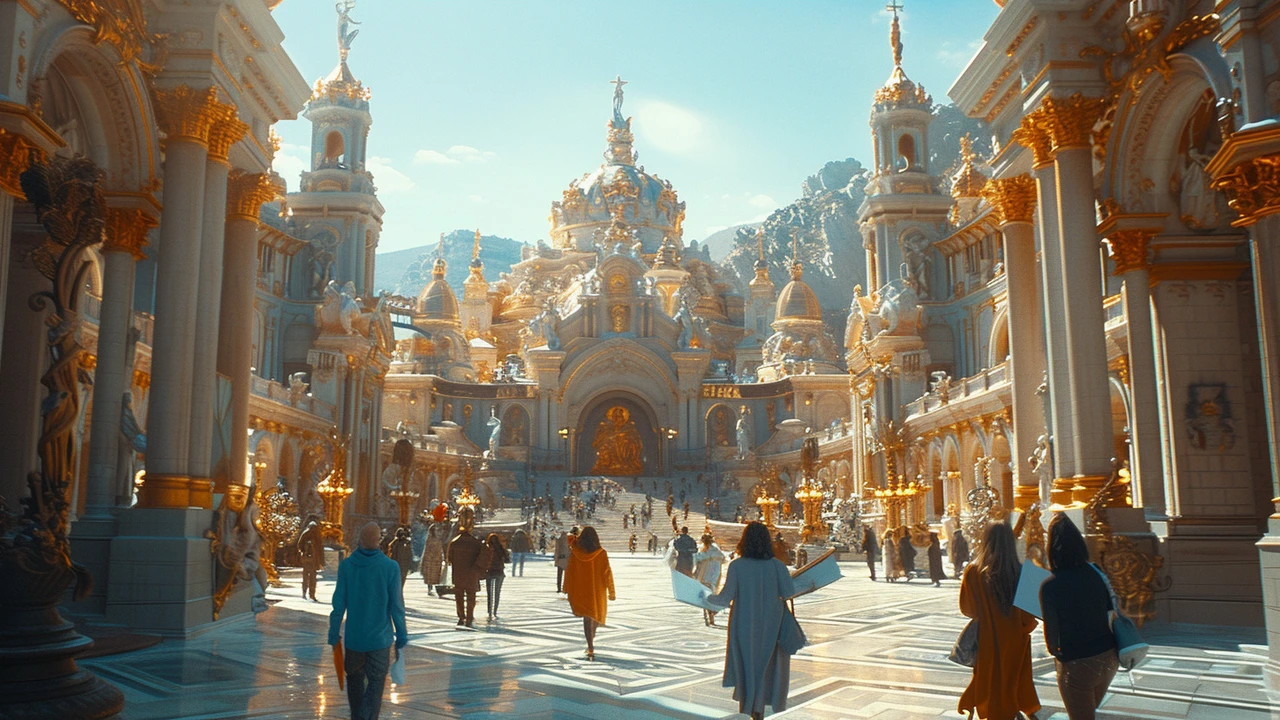Unveiling the Beauty of Beaux-Arts Architecture
 Aug, 2 2023
Aug, 2 2023
The Genesis of Beaux-Arts Architecture
Once upon a time, in the late 19th and early 20th centuries, there was an architectural style that emerged as the poster child for grandeur and opulence. These aren't your run-of-the-mill brick-and-mortar kind of structures, dear reader. No, they were expansive, lavishly decorated, and quite frankly, breathtaking. This was the era of Beaux-Arts Architecture.
This intriguing style, characterized by its highly ornamental and grandiose designs, harks back to the French L'École des Beaux-Arts, meaning 'School of Fine Arts'. Yes, you guessed it right, Beaux-Arts is a French term that translates to 'Fine Arts'. An interesting fact, the style got its roots from the teachings of this distinguished Parisian school. During this period, young architects from the United States and various parts of Europe studied at this illustrious institution, absorbing a lavish system of design, thus birthing the Beaux-Arts Architecture.
Elements of Beaux-Arts Architecture
One thing you should know about me: I love details. And boy, does Beaux-Arts offer plenty! By incorporating elements inspired by Greek and Roman architecture, Beaux-Arts is elaborate and symmetrical, but most tellingly, it is all about being undeniable. The style screams 'Look at me!' and truly, it's hard to ignore a Beaux-Arts building.
Classic elements include grand stairways, large arches, pilasters, columns, carved garlands, balconies, detailed stonework and so much more. The use of high-quality materials like marble, limestone, and granite is common. Buildings designed in this style often have flat roofs and are arranged symmetrically.
Landmarks of Beaux-Arts Architecture
While Beaux-Arts architecture is prominent worldwide, America, particularly New York City, became the epicenter of these alluring structures. The Gilded Age, as it was aptly called, saw the rise of Beaux-Arts in full swing. Amongst these, The Grand Central Terminal, New York Public Library and The Metropolitan Museum of Art stand as astounding examples of this style in the Big Apple.
In my travels to New York City, the Grand Central Terminal's beauty left me speechless. Its enchanting constellation ceiling, grand chandeliers, and stunning marble floors are a testament to the opulence of Beaux-Arts architecture.
Resurgence of Beaux-Arts Architecture
Despite being considered outmoded in the early 20th century, the Beaux-Arts style made a contemporary comeback! The resurgence is primarily seen in institutions with strong historical ties or new construction in historic districts. Architects reimagine and reckon with history, brimming with nostalgic elegance while creating buildings that are new and forward-thinking.
The best part? It offers designers a broad palette to work with and allows them to adapt the architecture to their specific needs while retaining the grandeur that characterizes Beaux-Arts. A sort of old meets new, if you will.
Impact of Beaux-Arts on Modern Architecture
Though contemporary architecture has shied away from the ornate in favor of the streamlined and minimalistic, Beaux-Arts' influence is still very much present. This style's academic approach, emphasis on symmetry, hierarchy, and strong axes, continues to frame our understanding of classical architecture.
Today, many architects incorporate elements of Beaux-Arts, such as the grand arches and columns, into their designs as a nod to the past. It's intriguing to witness this union of opulence and simplicity - a blend of tradition and innovation.
Appreciating Beaux-Arts Architecture
Like a fine painting, Beaux-Arts architecture is to be appreciated for its craftsmanship, artistry, and legacy. Embellishment isn’t merely decorative but is an integral medium to convey a narrative, a historical tale of times and trends past.
In a world where 'less is more' has become something of a mantra, Beaux-Arts is a reminder of the times when 'more was more.' So, whether you're an architecture aficionado or a casual admirer of beautiful buildings, Beaux-Arts architecture offers a feast for the senses.
Personal Encounters with Beaux-Arts
My love for Beaux-Arts architecture is no passing fancy. From the first time I watched Audrey Hepburn as Holly Golightly having breakfast outside Tiffany's, the beautiful Beaux-Arts building in the background captured my imagination. Little did I know then, this love affair was going to last.
One of my most delightful encounters with Beaux-Arts architecture was during my visit to the Musée d'Orsay in Paris. The museum, a former railway station, was a stunning revelation. From the grand clock that provides a panoramic view of Paris to the sculptures that balance on intricate stonework, the entire museum was a testament to the beauty of Beaux-Arts. This encounter was indeed one for the books!
Beaux-Arts isn't just an architecture style. It's sheer poetry in stone. And as a fan, appreciator, and casual observer, I encourage you to visit places replete with this style on your travels. Isn't it truly magnificent how structures can whisk you to a different era altogether? It surely is another form of time travel, if you ask me.